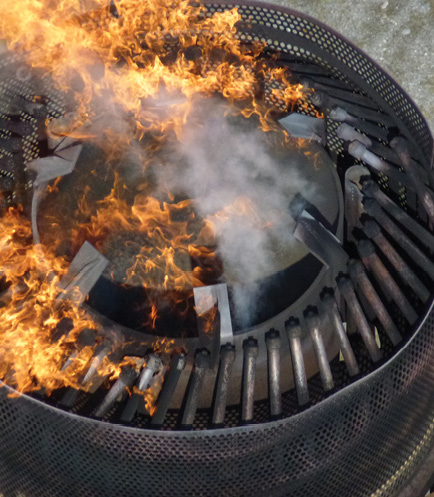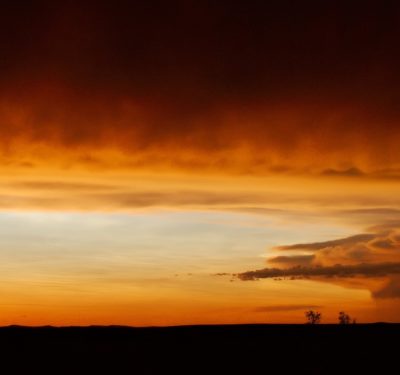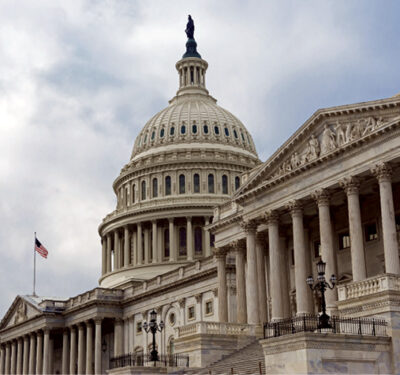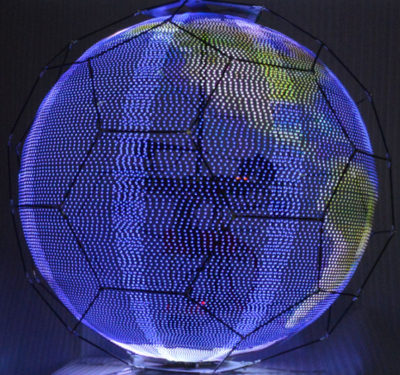
UAVs have become standard tools in the oil and gas industry, delivering valuable benefits over an ever-widening range of applications.
“Shell has been working with drones since 2012,” said Adam Serblowski, robotics theme lead, UAS and MR, at global energy provider Shell Oil. “It initially started with flare tip inspections and other work at height. Today, we’re doing a little bit of everything. After we introduced drone-based visual inspection, surveying operations followed almost immediately, and we have continued to expand this to cover any number of applications. We are now using drones for emergency response, security, real estate, project planning and environmental monitoring.
“One of the things that makes drones so powerful,” Serblowski continued, “is the fact that they are general data collection platforms, and so this single tool can provide data to a host of stakeholders. As such, end users are continually coming up with new applications, which has made the drone a common sight in Shell facilities worldwide.”
Depending on the application, Serblowski said, data delivered can take different forms: “Many inspections still culminate in a pdf report, with some pictures and videos on a USB stick. We are seeing this change though, as we are now pursuing a strategy in which all the data gathered by drones and other robots ends up in the cloud, where it can feed the rest of the digital workflow.” AI (artificial intelligence) functions are employed to identify and alert inspectors to specific items of interest, reducing the need for people to review the gathered data. “This also allows us to view the data as a digital twin, which makes the information easier to consume, and again links us back into other digital initiatives.”
Serblowski said the vast majority of drone operations at Shell are carried out by third-party operators. “This means we don’t have to concern ourselves with the specific hardware or techniques they use and instead can focus on deliverables. We define what we want and include a technical specification on how we ‘d like the data delivered. To ensure safety, Shell Aircraft, our internal aviation organization, has created a set of requirements for drone operations against which each vendor is audited.”
Now, under increasing pressure from governments and stakeholders and fueled by concerns about climate change, big oil companies are increasingly turning towards the production of cleaner energy. The trend is particularly marked on the European front. Earlier this year, for example, Royal Dutch Shell committed to building a new wind farm off the coast of the Netherlands while delaying fields in the North Sea and the Gulf of Mexico. Also this year, France’s Total agreed to invest in a wind farm off the Scottish coast, and in a major solar energy project in Spain, as well as in an electric and natural gas company in that country. BP has announced that it will not prospect for oil in new countries, and it, Shell and Total have announced they will be joining forces to expand their electric vehicle charging facilities. All these companies are making concrete moves in pursuit of cleaner energy alternatives, and whether it’s oil and gas or alternatives, drones will be contributing on site.
PARTNERING UP: OIL AND GAS
One third-party operator providing drone services to Shell is Cyberhawk, based in the City of Edinburgh, United Kingdom. Cyberhawk’s tool kit includes, among other vehicles, the Intel Falcon 8, which typically sports a Sony imaging sensor, and the highly adaptable, Netherlands-made Acecore Zoe.
Recently, Shell called on Cyberhawk to conduct a live flare inspection at its facility in Moerdijk, one of the Netherland’s largest petrochemical plants. The site extends over 600-plus acres and produces 4.5 million tons of product per year.
Shell needed Cyberhawk to deploy rapidly to aid in troubleshooting and defect analysis. The work involved the close visual inspection of an 80 meter high live flare stack, including the flare tip and supporting derrick structure. Shell wanted to compare the condition of the unit against past inspections, to establish whether there had been any deterioration and to shape an appropriate maintenance plan.
The resulting report provided detailed information to on-site technicians on the operation of pilot burners and flame front generator. A two-man team from Cyberhawk, which included a flare inspection engineer and an oil-and-gas qualified inspection pilot, took just two days to conduct the work. Under traditional methods, this kind of job would have taken weeks to complete, requiring a facility shutdown, and it would have been inherently hazardous, involving human inspectors working at height using rope access or scaffolding.
“The drone industry is full of innovation,” Serblowski said, “and we are constantly seeing new tools and sensors coming to market, which is only going to further expand our range of use cases in the future.” With that, Shell has started to bring some drone operations in-house: “One of the things we’re doing now at our Deer Park Manufacturing complex in Houston is using our own drones to do weekly inspections of floating roof tanks,” he said. These are cylindrical tanks with roofs that float on the surface of the stored liquid, rising and falling with the liquid level, thus reducing breathing and evaporative loss. “Particularly in a hot and humid climate, these tank roofs need to be inspected regularly, to make sure the drains are clear and there is no standing water that could cause the roof to sink. Previously, an inspector had to climb up on a weekly basis to check the condition of the roof. With the drones, we now capture images that are then shared to the inspection team, greatly reducing the time and risk associated with these activities.”
MOVING TO RENEWABLES
Cyberhawk CEO Chris Fleming said his company is set to follow the oil industry into the realm of renewable energies. As Fleming told Inside Unmanned Systems, “renewables is about five to 10 percent of the business, but we’re starting to see oil and gas companies rebrand themselves as energy companies, in line with the desire to move away from fossil fuels. They’re starting to invest in renewable energy solar farms, and in wind energy, offshore and onshore. In the future these companies won’t call themselves ‘oil and gas’ but ‘diversified energy,’ and they’ll be getting revenue from a variety of income streams.”
Shell’s Serblowski said, “Similar to our traditional operations, drones will be used in the renewable space to support and augment existing ways of working. The objects under inspection may change, but the strategy and mindset will remain the same.”
Another European oil and gas giant making concrete moves in the renewables marketplace is Italy’s Eni. The company recently announced the commencement, through a local subsidiary, of commercial production at the Badamsha Wind Farm in North-West Kazakhstan. The new facility has a capacity of 48 megawatts and will provide the region with an annual power generation of about 198 gigawatts, with an overall CO2 savings of 172,000 tons per year. Badamsha represents Eni’s first large-scale investment in wind.
Drone use has become standard practice at Eni. The company partners with drone service providers such as oil, gas and offshore specialists Sky-Futures, based in the Aberdeen area, United Kingdom. With its drone operations, Eni’s primary focus is on applications that safeguard health, safety and the environment, but it is also starting to use drones in seismic assessment and logistics operations. This experience and know-how will be put to good use in its renewables activities.

CYBERHAWK USE CASES
For a closer look at how drones are being used in the renewable energy sector, we went to Cyberhawk’s Lead Engineer, Renewables, Euan Baird. “We’ve been increasing our renewables work year on year,” Baird said. “It’s a growth industry and drones are fairly well adopted across the board.” The company’s relationship with oil giant Shell has certainly been fruitful, he said: “We have been granted access to operate across all of Shell’s facilities, which is a rare privilege. We believe there is good faith in both Cyberhawk as a business and also the technology we use. As the drones become more advanced and our pilots become more skilled, new opportunities are becoming apparent and, seeing the way drones are being adopted to ensure maximum levels of safety and efficiency, the future is very positive.
“In terms of wind specifically,” Baird said, “using drones on wind farms comes with lower risk and required scrutiny, because of the wide open spaces we are working in, so companies have been keen to adopt the technology. Wind turbines are a great structure for automated inspection, due to their repetitive design. We can sometimes operate as the turbine technician as well, meaning we can be completely autonomous on site and this reduces client costs. With one of our Falcon 8s, with a Sony A600 or a7r4 onboard, we can get very detailed imagery, capable of detecting millimeter-sized defects and fractures.”
Baird cited to a recent project for a major OEM, where Cyberhawk was tasked with inspecting wind turbine blades at an onshore wind farm in the UK. The OEM wanted to compare drone-captured data to that gathered using its traditional ground-based camera solution. Despite 25-knot wind speeds, the Cyberhawk team was able to conduct the inspection in just a few minutes. Significantly, they were able to identify a crack on the trailing edge of a turbine blade that a ground team using the traditional inspection method had failed to pick up. Trailing-edge cracks can be difficult to see and, if not detected and monitored from an early stage, can become progressively worse, leading to serious structural damage and costly repairs.
Cyberhawk has carried numerous and much larger-scale inspection programs for major renewable energies suppliers, such as Spanish-based Siemens Gamesa, both onshore and offshore, processing and uploading data on the same day, eliminating the risks of working at height, reducing downtime and minimizing lost production for the client. Cyberhawk’s asset management software, iHawk, allows clients to quickly understand the condition of their facilities, accessing high-definition images of entire blade surfaces of every turbine, as well as engineering commentary. The resulting imagery also allows clients to see and assess the severity of defects for themselves, and ultimately to prioritize repairs and allocate budgets.
Surveying operations have become another big slice of the renewables pie. In one surveying project, Cyberhawk used a fixed-wing UAV with onboard RTK GPS positioning to quickly acquire geospatial data in a remote area in northern Scotland, in preparation for the construction of a new wind farm. A two-man survey team, comprising a land surveyor and an experienced pilot, took just two days to survey a 568-acre area of boggy moorland.
Under traditional, ground-based surveying methods, the same job would have taken more than two weeks to complete, with doing it on foot being difficult and potentially dangerous. Cyberhawk provided high-resolution orthophoto imagery in tiled JPG format, with 3-centimeter-per-pixel ground resolution, as well as a Digital Surface Model in CSV format on a 1 meter grid spacing and a 3D point cloud in LAS format. The project was completed on time, with the client reporting significant cost savings.
CONFIDENCE FOR THE FUTURE
It’s evident that drones and other unmanned and automated systems have a future with both the oil and gas and alternative energies sectors. “Yes,” said Adam Serblowski, “Shell is absolutely expanding the use of drones and other unmanned systems. Across the industry there is an asset efficiency challenge caused by more complex operations coupled with zero tolerance for health, safety and environmental incidents. Digitalization is going to help us tackle these challenges, as it enables improved asset efficiency and profitability through reduced operating costs, accelerated production and speed to market. Robotics and drones will address the mobility element of the challenge, automating the data-collection for advanced analytics tools, to provide proactive integrity information.”
About the wider drive toward renewable energies, Cyberhawk CEO Fleming said: “There definitely is a great desire to increase the number of wind turbines, and look how much solar has grown in the last five years. Look at the number of solar parks in the last two years; it’s more than in the previous 10 years. As the technology improves and becomes more efficient, you’ll have your energy coming from a variety of sources.”
Cyberhawk’s Baird reinforced the shift toward renewables. “Oil and gas companies are transitioning to becoming energy companies, and we always make sure we’re ahead of the industry.” The benefits bear repeating: “Traditionally, work such as underdeck inspections would be carried out by linesmen with rope access equipment, who would abseil with wire slings and harnesses,” Baird continued. “From there, they would take thousands of pictures, and it would take large teams weeks to collect all the data in this way.
“Using UAVs, we can complete the same job in three days with a team of two, and no one is in harm’s way. This drastically reduces time and money spent, and, additionally, the quality of the work improves, because the mobility of a drone far outweighs the mobility of a linesman.”






